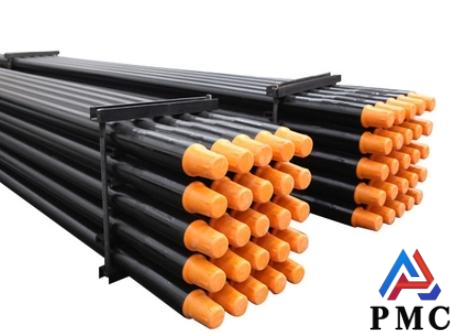
Introduction to Heat Treatment of Drill Pipes
Drill pipe is hollow, thick-walled piping that transmits drilling fluid and torque through the wellbore to the drill bit on a drilling rig. Common drill pipe materials include carbon steel, alloy steel, etc. However, due to the limitation of productivity, band segregation is often found in drill pipes during normal production, which seriously affects the quality and service life of drill pipes. Heat treatment of drill pipes can solve this problem and play an important role in improving the quality of drill pipes. So what is the heat treatment of drill pipes?
Purpose of drill pipes heat treatment
1. Improve strength and toughness: Through appropriate heat treatment process, the internal structure of the drill pipe can be optimized, thereby improving its strength and toughness.
2. Improve wear resistance: During the drilling process, the drill pipe will rub against rocks, soil and other media. Good heat treatment can form a wear-resistant structure on the surface of the drill pipe, improve its surface hardness, reduce the wear rate, and reduce drill pipe failure caused by wear.
3. Eliminate residual stress: During the manufacturing process of drill pipes, processes such as forging and rolling will generate residual stress inside.

Common heat treatment processes
Quenching: Heat the drill pipe to above the critical temperature, keep it warm for a certain period of time, and then quickly put it into a quenching medium (such as water, oil, etc.) to cool it. Quenching can significantly increase the hardness and strength of the drill pipe, but it will reduce its toughness. Therefore, for the quenching process of the drill pipe, it is necessary to accurately control the heating temperature, holding time and cooling speed to obtain a suitable match between hardness and toughness.
Tempering: usually carried out after quenching, the quenched drill pipe is heated to a temperature range below the critical temperature, kept warm for a certain period of time and then cooled. The main function of tempering is to eliminate the internal stress caused by quenching, reduce hardness, increase toughness, and improve the comprehensive mechanical properties of the drill pipe.
Normalizing: Heat the drill pipe to above the critical temperature, keep it warm for a suitable period of time, and then cool it in the air. Normalizing can refine the grains, improve the internal structure of the drill pipe, increase its strength and toughness, and eliminate defects caused by forging, rolling, etc.
Quenching and tempering treatment: It is a combination of quenching and high temperature tempering. The drill pipe is first quenched and then tempered at high temperature, so that the drill pipe has good comprehensive mechanical properties, both high strength and good toughness.
Key points of heat treatment process control
Heating temperature and time: Accurately controlling the heating temperature and time is the key to ensuring the quality of heat treatment. If the temperature is too high or the time is too long, it may cause the drill pipe grains to be coarse and reduce its mechanical properties; if the temperature is too low or the time is insufficient, the expected heat treatment effect cannot be achieved.
Cooling rate: Cooling rate has an important influence on the structure and performance of drill pipe. Different heat treatment processes require different cooling rates. For example, quenching requires rapid cooling, while tempering and normalizing require appropriate cooling rates.
Atmosphere control: During the heat treatment process, the atmosphere in the heating furnace also affects the quality of the drill pipe. In order to prevent defects such as oxidation and decarburization on the drill pipe surface, a controlled atmosphere heating furnace can be used, such as introducing protective gases such as nitrogen and hydrogen into the furnace, or using vacuum heat treatment to ensure the surface quality and performance of the drill pipe.
Quality inspection after heat treatment
1. Hardness test: The hardness test can be used to determine whether the heat treatment effect of the drill pipe meets the requirements. Carry out hardness tests on different parts of the drill pipe to ensure that the hardness uniformity is within the specified range.
2. Metallographic analysis: Observe the internal structure of the drill pipe through a metallographic microscope to analyze the grain size, morphology and tissue distribution.
3. Mechanical properties test: The drill pipe after heat treatment is subjected to mechanical properties test, including tensile test, impact test, etc., to detect whether its strength, toughness and other indicators meet the use requirements.


